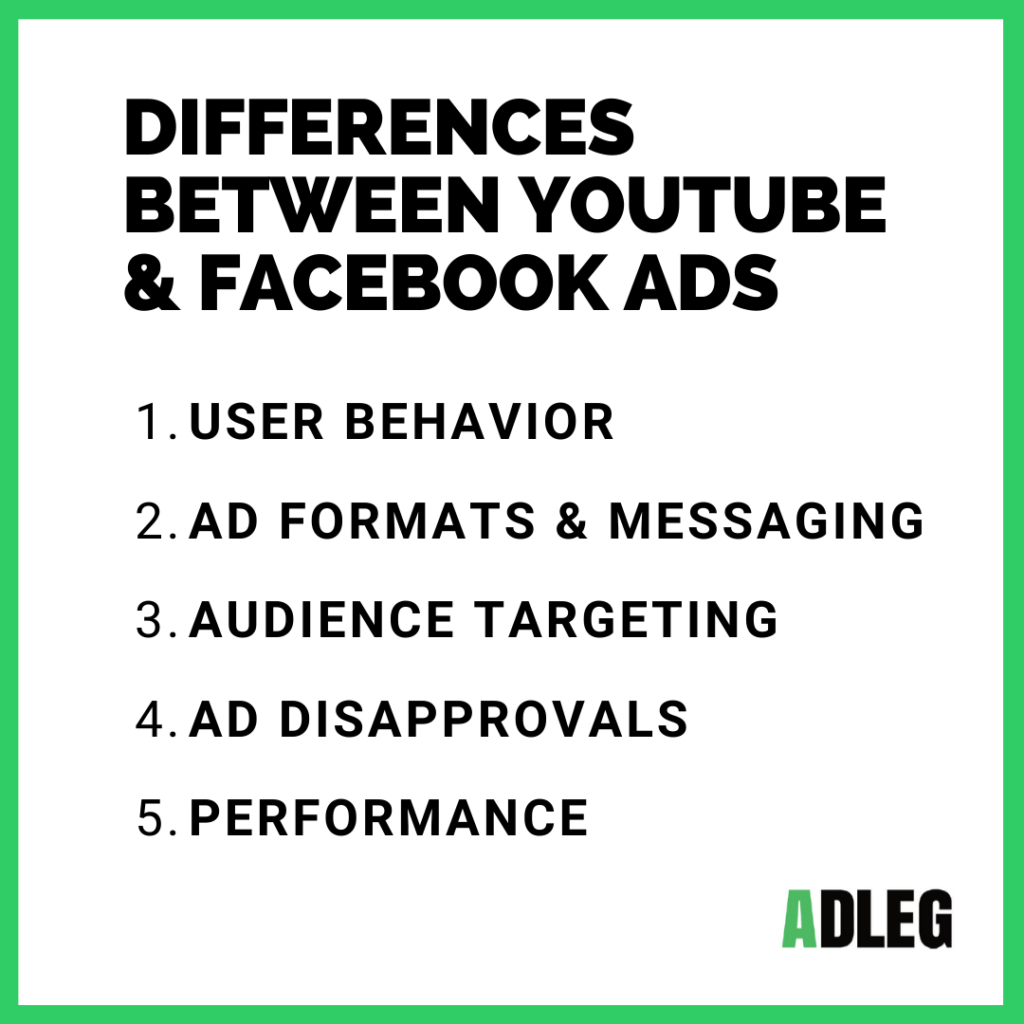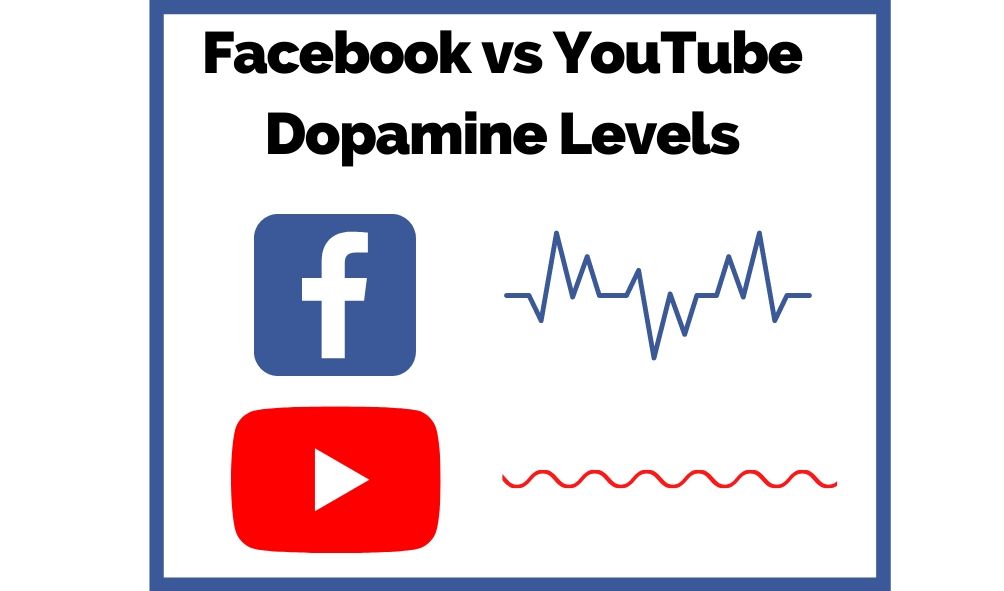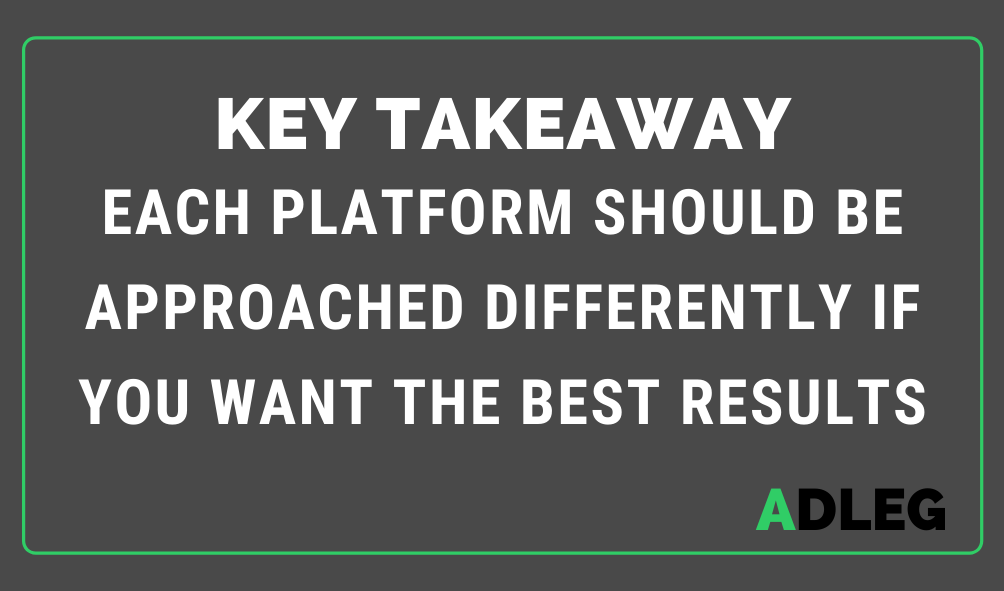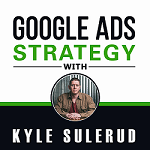At times, advertisements can all seem the same, especially on social media platforms, but I am here to tell you that not all ads are as similar as they seem. While my marketing agency, AdLeg, specializes in YouTube Ads for webinars, many of my clients run both Youtube and Facebook Ads. As they are both popular choices within the industry, I wanted to write a blog post comparing some of the most important differences between the two platforms.

1. User Behavior
When it comes to advertisements, user behavior is a major factor that is commonly overlooked. While most people utilize both YouTube and Facebook, they are in completely different mindsets as they consume information from either platform.
In the end, both platforms have the same goal of delivering dopamine to their viewer’s brain, while viewers of each platform have the same goal of wanting to feel good while being entertained. So, while both platforms deliver dopamine, the method of delivery varies.
Thanks to Facebook’s notification system and ever-evolving newsfeed, users of this platform are already in highly excitable modes. When notifications pop up on the screen or as users scroll through their feed, the dopamine is delivered to their brains more erratically.
On the other hand, YouTube viewers consume content in a more steady, even flow. They are not constantly being bombarded with different alerts and notifications like the latter, but watch videos, resulting in more stable levels of dopamine.

In relation to advertisements on these platforms, the dopamine levels affect how people interact with each type of ad. Because Facebook viewers are in much more excitable moods, they are less likely to want to sit down and watch a long video or webinar. But, on the other hand, they are more willing to click on something and either download the content or purchase the product, thanks to the spikes of dopamine it creates. This makes it much easier to get consumers to purchase products through Facebook Ads.
In comparison, YouTube is the platform where people go to consume larger amounts of information via videos. Viewers are already in the mindset that they want to watch something – they are much more likely to click on an ad for an hour-long webinar.
In fact, because they are already on YouTube, there’s a pretty good chance that the viewer may even end up watching the entire webinar and will be more likely to make a larger purchase at the end. This differs from the more spontaneous, smaller purchases that often occur as a result of Facebook Ads.
2. Ad Formats & Messaging
So, while consumers are in different mindsets on each platform, if you have a good, strong message, it may work across the board as long as the form of delivery fits the platform.
On Facebook, a video post consists of both the video and a text component. Because people check Facebook periodically throughout the day and in public areas, they are less likely to pay really close attention to what they are watching or reading. This results in the text area being almost more valuable as it is often what people read first. Next, they may watch the video, but usually don’t even listen to the audio to accompany the video. This really highlights the importance of the text speaking for itself while the video is more of a supplement.
Quite the contrary, YouTube videos are ALL about the video. After all, it is a platform based solely on videos. Because there is no post along with the ad, the information should all be delivered in the video. While there is a 15 character headline, and a 10 character button, both don’t allow for much to be said, so they are mainly used to capture attention or indicate where people should click. The beginning of the video is particularly important as it must capture the attention of the viewer to keep them watching. From there, the information should help the viewer develop interest. And finally, the ending of the video needs to be the clincher that calls the viewer to take the next steps on what you are offering.
3. Audience Targeting
The next major difference between the two platforms is audience targeting.
Thanks to it’s more social nature, profiles filled with individual and personal information about each person allow Facebook to develop pre-populated lists including what people are interested in, who they follow, listed occupations, relationship status, and more. This allows Facebook to target the interests of each person which may work really well for an advertiser if there is a list that is highly relevant to what they are selling.
YouTube Ads are done a little differently as they are conducted through Google Ads. Google operates on lots of different types of targeting, such as what people are searching for on Google and what websites they are browsing, allowing profiles to be created based on what people are interested in and products or services they may be shopping for. YouTube also targets certain types of videos based on topics, channels, or specific videos, such as popular and trending videos or just videos in really specific niches. Occupations are a bit more difficult to assume based on YouTube preferences, but video and search histories may indicate it.
You can’t expect to take what has worked with Facebook Ads targeting and apply it the same way to Youtube Ads targeting. Platforms must be considered differently and you should exhaust all options on both platforms to find out what will work best for you.
So, clearly, there are many differences when it comes to targeting audiences. I can’t necessarily say that one is better than the other; they are both just different.
4. Ad Disapprovals
One thing that Facebook Ads and YouTube Ads have in common is that ads are disapproved on both platforms. While both struggle with this challenge, Facebook tends to be much more problematic than YouTube.
For some odd reason, Facebook will disapprove ads, give no explanation as to why they disapproved, and possibly even shut down an entire account just like that. They don’t give guidance on how to fit their requirements or meet the approvals either. Even if you’re doing everything correctly, your Facebook Ads account can be shut down which tends to be really frustrating.
YouTube is a little more lenient with their ad policies as disapprovals aren’t such a major problem and it doesn’t happen frequently compared to Facebook. The only time an account will get shut down is if the user is actually and obviously going against policies or if they are trying to say or advertise things they shouldn’t be.
If you are following the rules with Youtube Ads, an ad may randomly be disapproved sometimes, but the entire account will not be shut down. If you resubmit the same ad, it may get approved the second time around. But, if you continue to resubmit ads and they continue to get disapproved, Google’s customer support will explain why your ad is getting disapproved and what you need to do to fix it. You can also continue to come at your ad from different angles in an attempt to get approved so you’re not stuck at a standstill waiting to hear back from YouTube.
So when it comes to ad disapprovals, YouTube wins (by not being as strict).
5. Performance
Overall, there isn’t a significant difference in performance between Facebook and YouTube Ads. I’m sure YouTube Ads gurus will try to tell you that they are more effective than Facebook Ads and vice versa, but it totally just depends on the situation.
To reiterate, because YouTube is a video platform, if you are running traffic to a webinar, more people will watch, resulting in more opt-ins that may lead to actual purchasers. The quality of traffic from YouTube also tends to be higher as it may cost more to get people to take the initial step. But then again, it’s easier to get people to do things right away with Facebook, thanks to the dopamine spikes.
Of course, these are all observations based on typical situations, so it won’t always go one way or another. The most important step you can take to ensure success is to watch and analyze your results. Keep an eye on how both platforms are doing and don’t stop utilizing one just because the other is more profitable. If you’re profitable in both, continue to do both. Just remember that each way of advertising has very important differences!

I hope you got a lot out of this video! If you’re interested in working with me and my team, to see what we can do for you with YouTube Ads, click here for more information.
